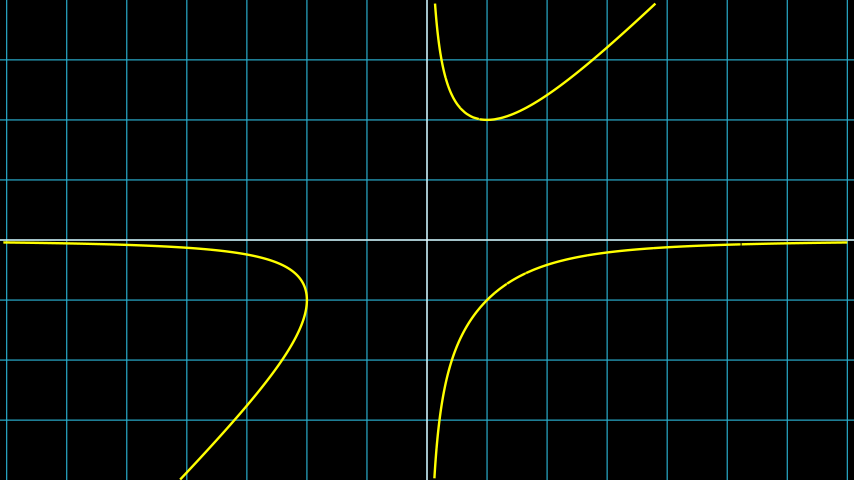ImplicitFunction#
Qualified name: manim.mobject.graphing.functions.ImplicitFunction
- class ImplicitFunction(func, x_range=None, y_range=None, min_depth=5, max_quads=1500, use_smoothing=True, **kwargs)[source]#
Bases:
VMobjectAn implicit function.
- Parameters:
func (Callable[[float, float], float]) – The implicit function in the form
f(x, y) = 0.x_range (Sequence[float] | None) – The x min and max of the function.
y_range (Sequence[float] | None) – The y min and max of the function.
min_depth (int) – The minimum depth of the function to calculate.
max_quads (int) – The maximum number of quads to use.
use_smoothing (bool) – Whether or not to smoothen the curves.
kwargs – Additional parameters to pass into
VMobject
Note
A small
min_depth\(d\) means that some small details might be ignored if they don’t cross an edge of one of the \(4^d\) uniform quads.The value of
max_quadsstrongly corresponds to the quality of the curve, but a higher number of quads may take longer to render.Examples
Example: ImplicitFunctionExample ¶

from manim import * class ImplicitFunctionExample(Scene): def construct(self): graph = ImplicitFunction( lambda x, y: x * y ** 2 - x ** 2 * y - 2, color=YELLOW ) self.add(NumberPlane(), graph)
class ImplicitFunctionExample(Scene): def construct(self): graph = ImplicitFunction( lambda x, y: x * y ** 2 - x ** 2 * y - 2, color=YELLOW ) self.add(NumberPlane(), graph)Methods
Initializes
pointsand therefore the shape.Initializes
pointsand therefore the shape.Attributes
animateUsed to animate the application of any method of
self.animation_overridescolordepthThe depth of the mobject.
fill_colorIf there are multiple colors (for gradient) this returns the first one
heightThe height of the mobject.
n_points_per_curvesheen_factorstroke_colorwidthThe width of the mobject.
- _original__init__(func, x_range=None, y_range=None, min_depth=5, max_quads=1500, use_smoothing=True, **kwargs)#
An implicit function.
- Parameters:
func (Callable[[float, float], float]) – The implicit function in the form
f(x, y) = 0.x_range (Optional[Sequence[float]]) – The x min and max of the function.
y_range (Optional[Sequence[float]]) – The y min and max of the function.
min_depth (int) – The minimum depth of the function to calculate.
max_quads (int) – The maximum number of quads to use.
use_smoothing (bool) – Whether or not to smoothen the curves.
kwargs – Additional parameters to pass into
VMobject
Note
A small
min_depth\(d\) means that some small details might be ignored if they don’t cross an edge of one of the \(4^d\) uniform quads.The value of
max_quadsstrongly corresponds to the quality of the curve, but a higher number of quads may take longer to render.Examples
Example: ImplicitFunctionExample ¶

from manim import * class ImplicitFunctionExample(Scene): def construct(self): graph = ImplicitFunction( lambda x, y: x * y ** 2 - x ** 2 * y - 2, color=YELLOW ) self.add(NumberPlane(), graph)
class ImplicitFunctionExample(Scene): def construct(self): graph = ImplicitFunction( lambda x, y: x * y ** 2 - x ** 2 * y - 2, color=YELLOW ) self.add(NumberPlane(), graph)
- generate_points()[source]#
Initializes
pointsand therefore the shape.Gets called upon creation. This is an empty method that can be implemented by subclasses.
- init_points()#
Initializes
pointsand therefore the shape.Gets called upon creation. This is an empty method that can be implemented by subclasses.